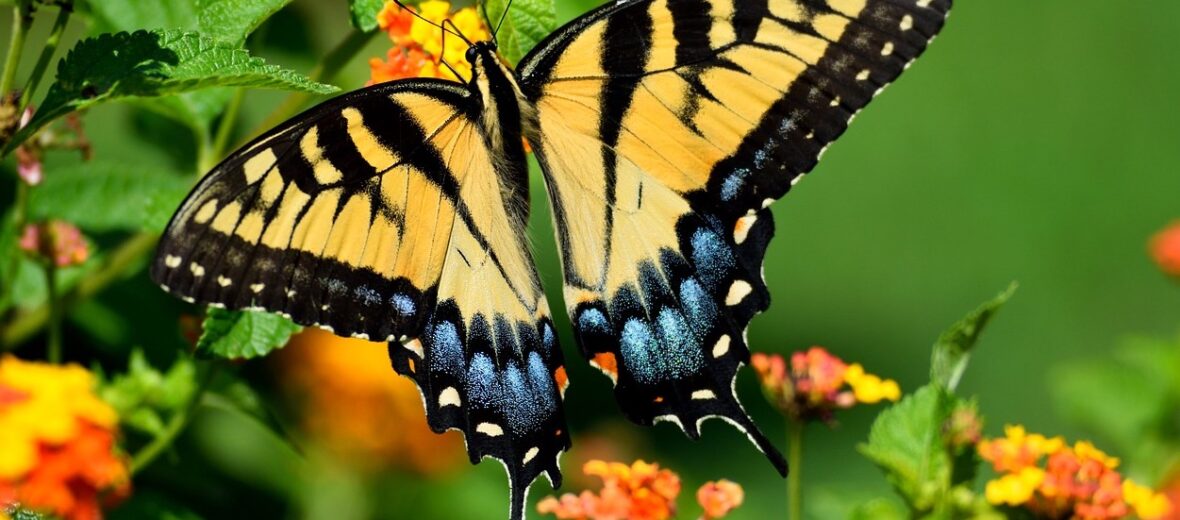
Found throughout North America, from Canada down to Mexico, it’s the tiger swallowtail butterfly. They can be found in parks, woodlands, forest edges, meadows, pastures, swamps, and gardens. These beautiful butterflies can even be seen in urban settings. Swallowtails are easy to spot. They’re large, yellow, have black tiger stripes, and have secondary wings equipped with long tails, like a swallow. These butterflies are listed as Least Concern by the IUCN.
First the Stats…
Scientific name: Papilio glaucus
Height: Up to 4 inches
Wingspan: Up to 5.5 inches
Lifespan: Up to 2 weeks
Now on to the Facts!
1.) Like all known butterflies, they have a proboscis (tube-like tongue) that is used for extracting nectar from flowers.
2.) Due to their large wingspan, they are able to withstand a substantial amount of wing damage and still fly.
3.) They prefer oregano, zinnias, purple coneflowers, and butterfly bush. They will also take to other flowering plants and even drink the juice of fallen fruit.
4.) Their main predators are: hawks, kestrels, hornets, woodpeckers, flycatchers, blackbirds, squirrels, owls, raccoons, and opossums.
5.) You can typically see them from February – November.
But wait, there’s more on the tiger swallowtail!
6.) Females produce between 2 – 3 broods in her short lifetime.
7.) The preferred plants to lay eggs on are the tulip tree, wild cherry, white ash, and sweet bay.
Did you know…?
Using atypical coloration, darker colored females can resemble the poisonous pipevine swallowtail. The caterpillars, when disturbed, will whip their head around and project 2 fang-like projections—simulating the strike from a snake!
8.) When the eggs hatch, the caterpillars are brown and resemble bird poop. This helps to deter predators.
9.) Eventually, caterpillars develop a blue/green coloration with yellow-black eyespots. These help the caterpillar to resemble a snake. This is called mimicry and is used by numerous animals in the world. For instance, the gopher or bull snake resembles the coloration and behaviors of a rattlesnake, for protection.
10.) At the end of the larval stage a hard cocoon forms around the fattened caterpillar. This stage, called pupae, results in an adult butterfly which emerges from the cocoon only a few days later.
Now a Short Tiger Swallowtail Video!
Also, check out the Critter Science YouTube channel. Videos added frequently!
Want to suggest a critter for me to write about? Let me know here.



